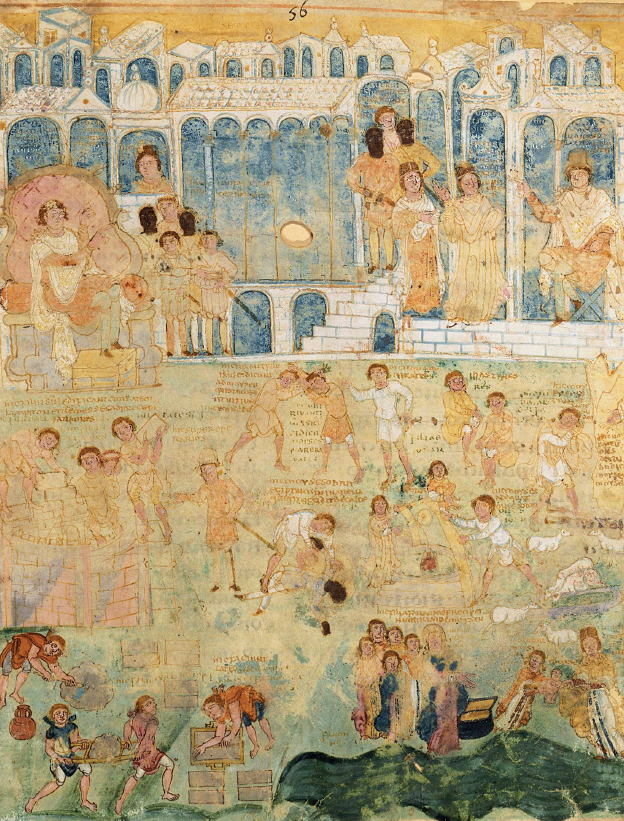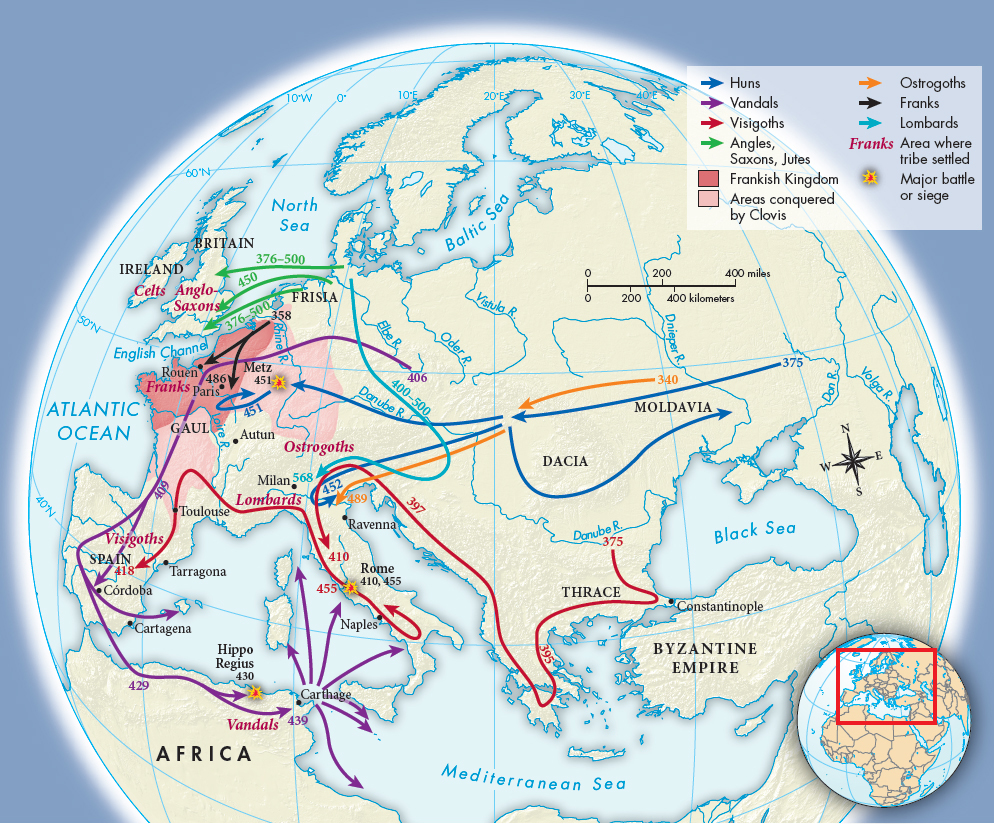Understanding World Societies:
Printed Page 218
> How did the barbarians shape social, economic, and political structures in Europe and western Asia?

This page comes from one of the very few manuscripts from the time of the barbarian invasions to have survived, a copy of the first five books of the Old Testament — the Pentateuch — made around 600, perhaps in Visigothic Spain or North Africa. The top shows biblical scenes, while the bottom shows people engaged in everyday activities: building a wall, drawing water from a well, and trading punches. (Bibliothèque Nationale, Paris, France/The Art Archive at Art Resource, NY)
TThe word barbarian comes from the Greek barbaros, meaning someone who did not speak Greek. The Greeks used this word to include people such as the Egyptians, whom the Greeks respected. The Romans usually used the Latin version of barbarian to mean the peoples who lived beyond the northeastern boundary of Roman territory, whom they regarded as unruly, savage, and primitive. That value judgment is generally also present when we use barbarian in English, but there really is no other word to describe the many different peoples who lived to the north of the Roman Empire. Thus historians of late antiquity use the word barbarian to designate these peoples, who spoke a variety of languages but had similarities in their basic social, economic, and political structures.
Barbarians included many different ethnic groups with social and political structures, languages, laws, and beliefs developed in central and northern Europe and western Asia over many centuries. Among the largest barbarian groups were the Celts and Germans; Germans were further subdivided into various tribes, such as Ostrogoths, Visigoths, Burgundians, and Franks. Celt and German are often used as ethnic terms, but they are better understood as linguistic terms, a Celt being a person who spoke a Celtic language and a German one who spoke a Germanic language. Celts, Germans, and other barbarians brought their customs and traditions with them when they moved south and west, and these gradually combined with classical and Christian customs and beliefs to form new types of societies. From this cultural mix the Franks emerged as an especially strong and influential force, and they built a lasting empire (see “The Merovingians and Carolingians”).
